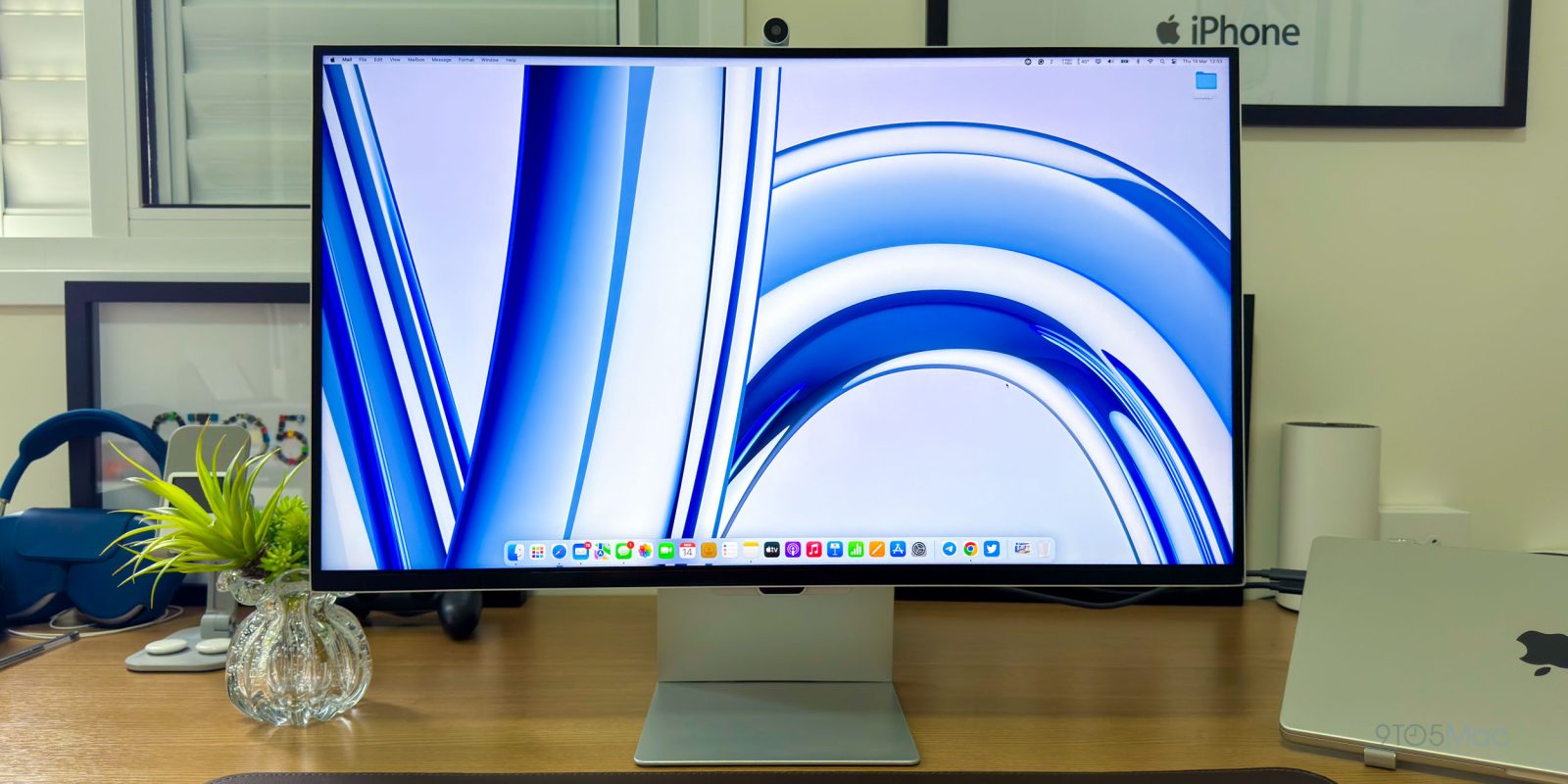
Apple’s Studio Display was launched two years ago as a more affordable option for those looking for a good external Retina display for their Mac. A year later, Samsung came out with its own alternative to the Studio Display: the ViewFinity S9. With the same screen size, 5K resolution, and price as Apple Studio Display, is the Samsung ViewFinity S9 any better? Read on as I detail my experience with Samsung’s 5K display.
Choosing an external monitor for my Mac
I’m not exactly a display expert, but I like to read, write, and edit my videos on a high-resolution screen with reasonably accurate colors. The Retina display on my MacBook has always been more than enough, but I’ve never found a display that’s as good as it is.
For context, I currently use a 27-inch 4K monitor from LG. The 4K resolution is noticeably better than 1080p for me, but at 27 inches, I can definitely see that the display isn’t as sharp as my Mac’s display – at least not at optimal settings. That’s because Apple’s Retina displays use HiDPI (High Dots Per Inch) to double the scale of the interface, making everything super sharp.
With a 5K display, macOS can render the 2560×1440 interface at 2x, taking advantage of the full 5120×2880 resolution at 218 pixels per inch. With my 27-inch 4K display, I either get a scale with larger elements (which makes me lose space for windows) or I lose sharpness at a lower HiDPI.
That’s why the Apple Studio Display has 5K resolution. However, there aren’t many 27-inch 5K displays available out there. And although Studio Display sounds like the most obvious and best option for Mac users, it’s always nice to have some competition – especially when a Studio Display costs over $3,000 in Brazil.
In the US, both Apple Studio Display and Samsung ViewFinity S9 cost $1,599. But although they’re similar in many ways, they have their pros and cons.
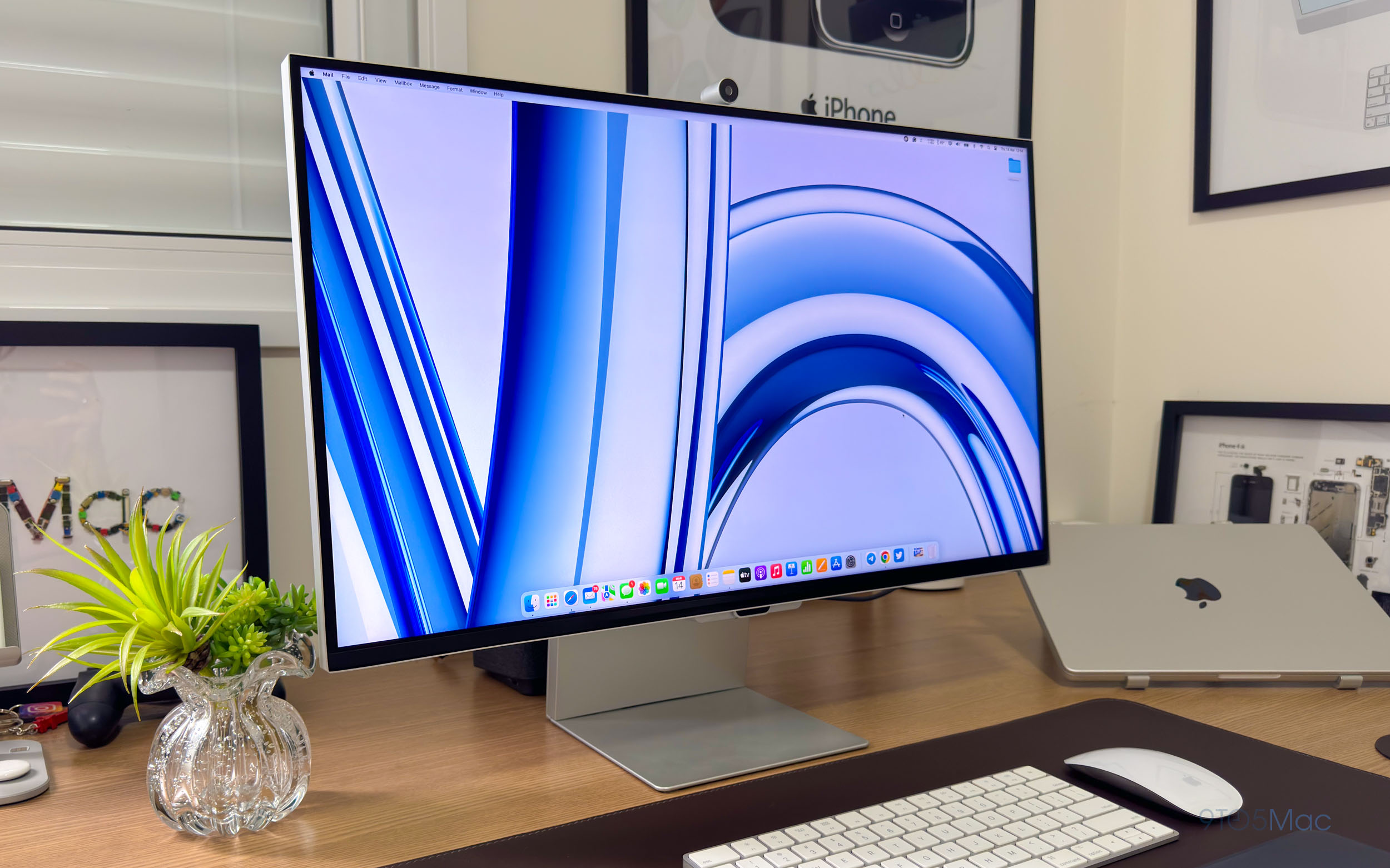
Setting up the Samsung ViewFinity S9
The first thing I noticed when setting up the Samsung ViewFinity S9 is that there’s no denying that Apple has a much more seamless unboxing and setup process. I had to tighten a few screws, connect the screen to the stand, and spend a few minutes setting up the ViewFinity S9 before using it with my Mac. Studio Display, on the other hand, comes ready to use.
Here, I had already noted the first compromise Samsung made with its ViewFinity S9: the materials. Only the stand is made of metal, while the rest of the display is made of plastic. This is a bit disappointing for such an expensive monitor, although you won’t spend all day looking at the back of the monitor.
Apart from the plastic, the design of the ViewFinity S9 is quite elegant and very similar to the Studio Display. The bezels around the screen are even thinner than Apple’s, although the bottom bezel is thicker than those on the other sides. The plastic parts are painted silver, which helps to make it look more premium.
The good thing is that both displays have a Thunderbolt 4 connection with three extra USB-C ports on the back.
As good as a Retina display
When it comes to image quality, the ViewFinity S9 screen is just as good as the Studio Display. Not only are they exactly the same size and resolution, but the color fidelity is really good. Compared to the built-in display on my Mac, there isn’t a huge difference that bothers me. You may notice that the calibration isn’t exactly the same as Apple’s, but it’s not bad – it’s just a little bit different.
There are also plenty of color and contrast adjustment options that you can change, or even recalibrate the display manually if you wish. But overall, I was quite pleased with what I saw right from the start.
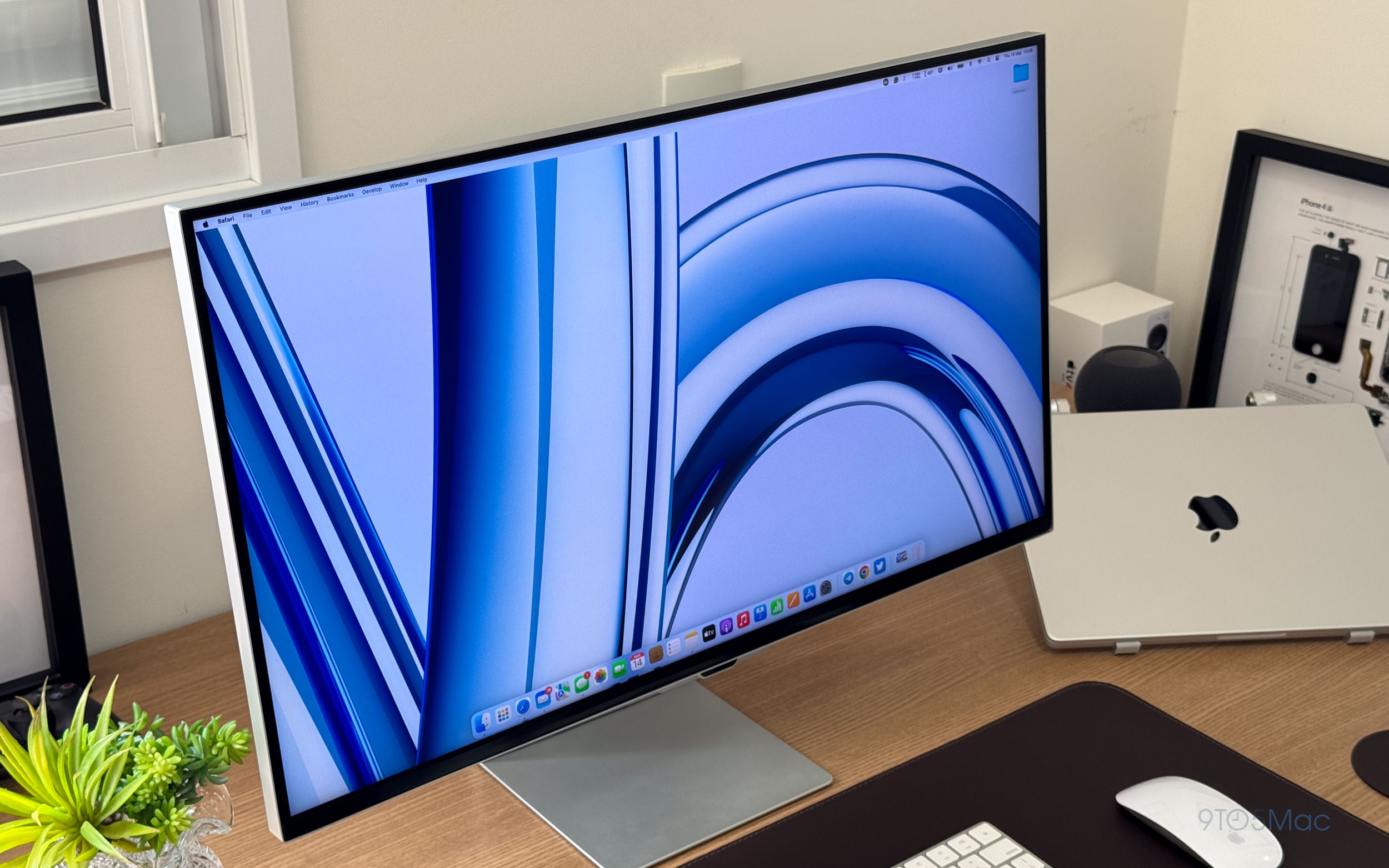
ViewFinity S9 also provides the same 600 nits of brightness as Studio Display, which is more than enough for working in brighter environments. Samsung says its display is HDR-enabled, but 600 nits isn’t exactly ideal for viewing HDR content. Even so, I have nothing to complain about the brightness, especially since it’s much better than the brightness of my LG display.
Here are some other technical tidbits about the ViewFinity S9: it has an LCD panel, so the blacks aren’t perfect, but that’s also a thing with Studio Display. The same applies to the 60Hz refresh rate. ViewFinity S9 also supports the DCI-P3 color space for a wide range of colors, making everything look more vivid.
After a few days, I feel like I’m using a screen made by Apple.
Advantages over Apple Studio Display
So what are the advantages of ViewFinity S9 compared to Studio Display? Well, since they’re the same price, Samsung has included some differentials in its hardware to make it more appealing. For instance, the ViewFinity S9 has a matte display by default. On the Apple side, customers have to pay an additional $300 to get the version with nano-texture glass.
I’m a fan of glossy screens, but Samsung believes that matte screens are a huge plus for professionals working in studios with bright lights behind them. And if you opt for the Samsung display, you’ll save $300 on that.
Samsung also includes a stand with tilt and height adjustment as standard. When it comes to the Studio Display, customers can opt for a more expensive stand with height adjustment which increases its price to $1,999. And if you choose the adjustable stand and nano-texture glass, you’ll pay $2,299 for your Studio Display.
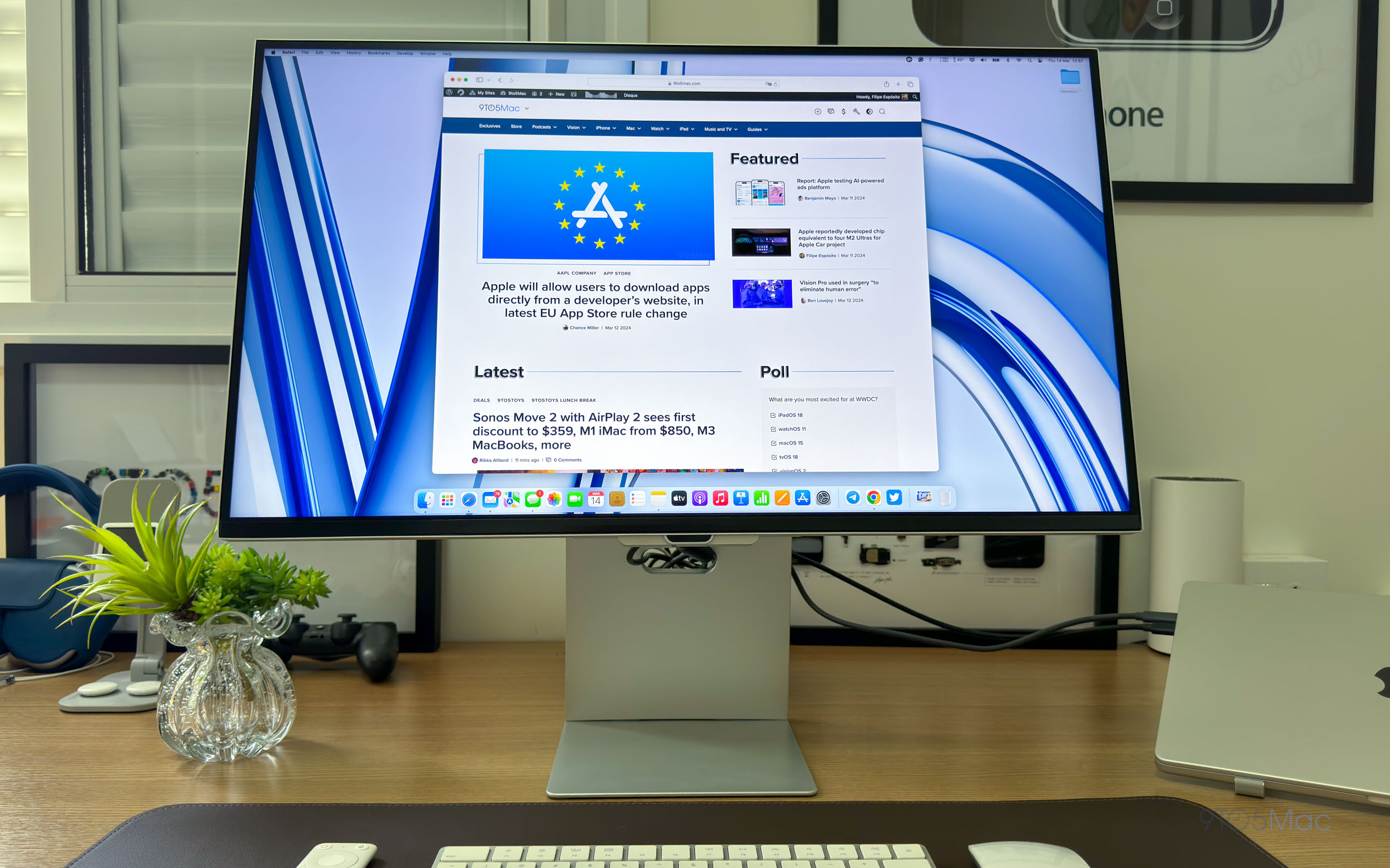
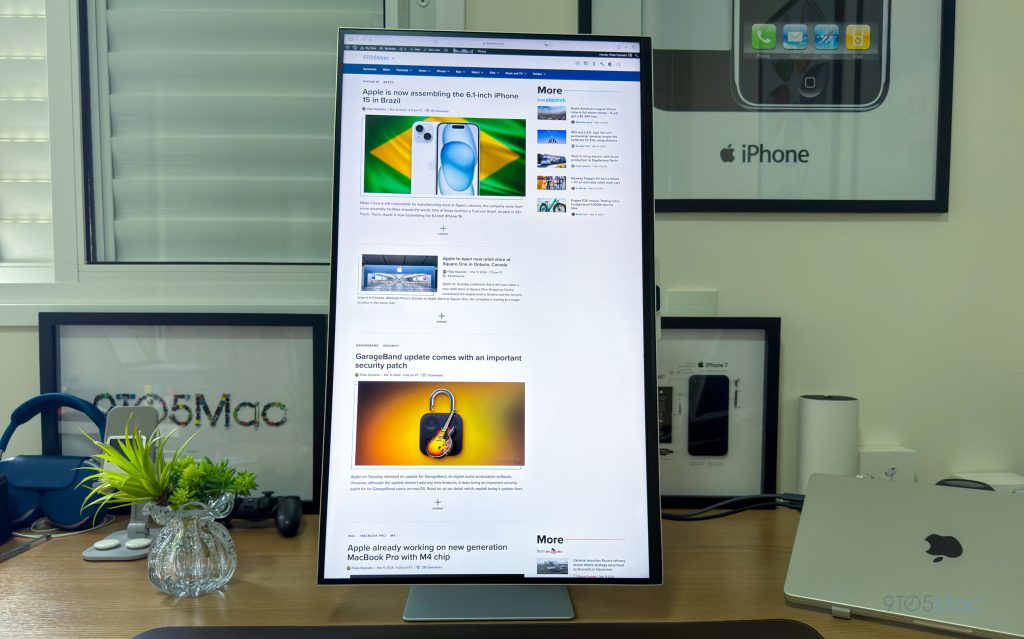
And by the way, the stand of the ViewFinity S9 is also rotatable, so you can use the display in portrait mode. Samsung’s offers all this for $1,599.
It could be better in some aspects
But the Apple Studio Display is also better than the ViewFinity S9 in a lot of ways. I’ve already talked about build quality: aluminum is definitely more premium than plastic, there’s no denying that. But there are some other aspects that make the Studio Display better than the ViewFinity S9 for some people.
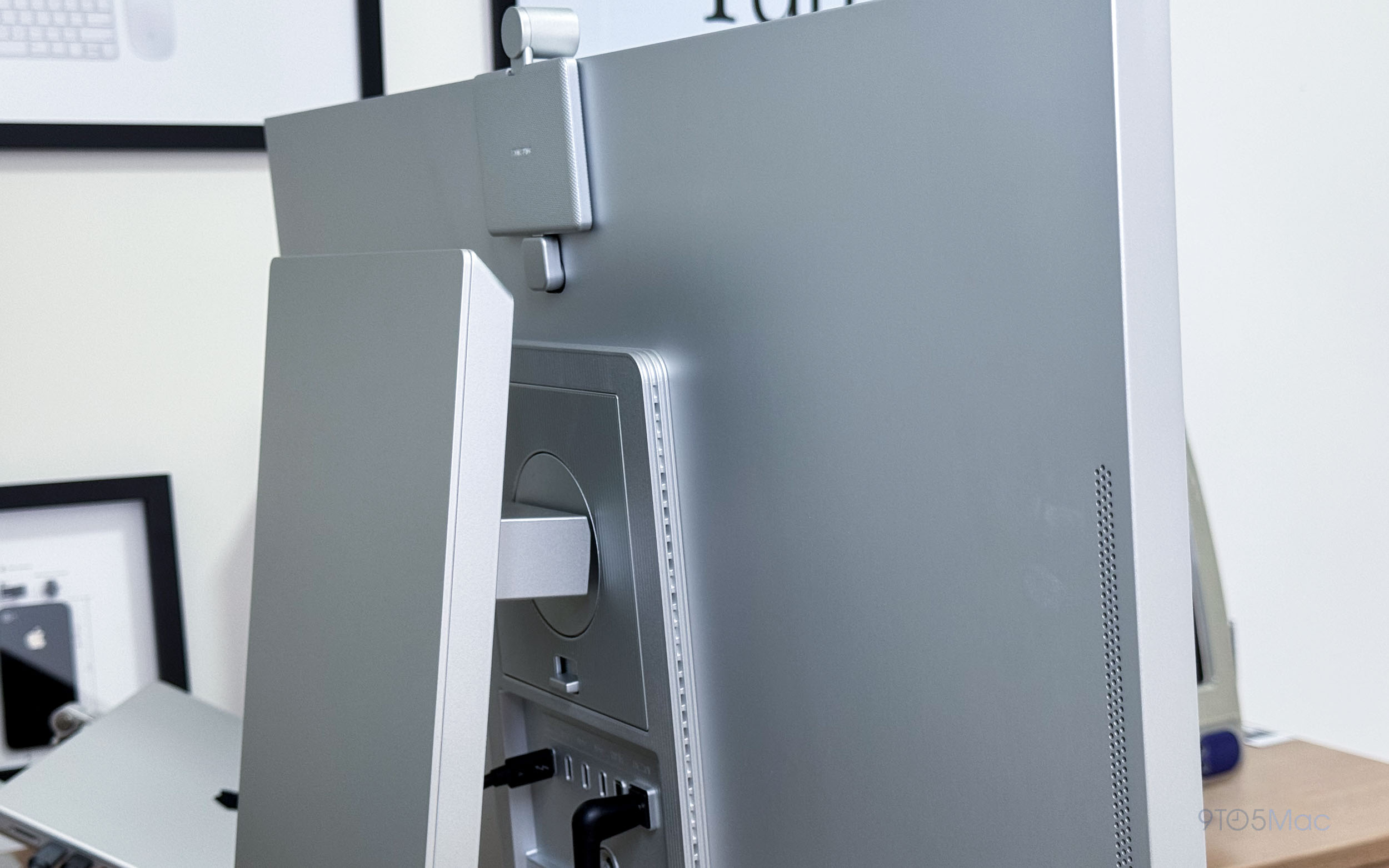
Both Studio Display and ViewFinity S9 have built-in speakers. However, while Apple offers six speakers with Spatial Audio, Samsung only offers two stereo speakers – and they don’t sound good. To be honest, most monitors don’t even have built-in speakers, but the ViewFinity S9’s speakers aren’t very loud and have zero bass.
Samsung and Apple displays have something else in common: a webcam with a microphone. When Studio Display was launched, users heavily criticized Apple for the poor quality of the 1080p webcam. However, although the ViewFinity S9 has a 4K webcam, the image quality is not impressive either, especially in low light scenarios. The microphones aren’t good either.
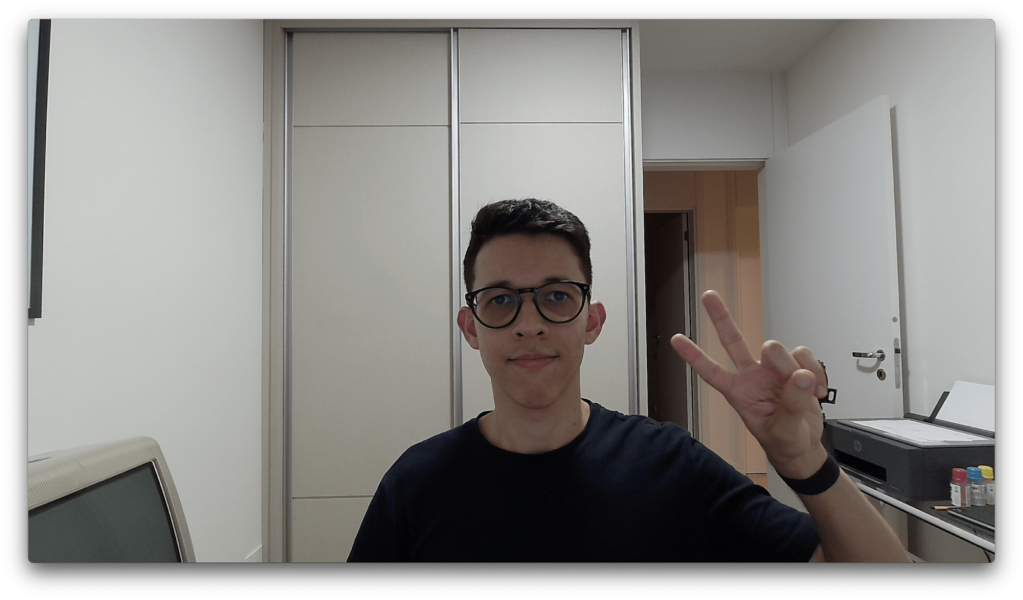
An interesting detail about the ViewFinity S9 is that the webcam is magnetically attached and can be removed. So if you have a better webcam or simply don’t need one, you can remove it from the monitor.
Smart features
While the Apple Studio Display doesn’t provide any “smart” features despite having an A13 Bionic chip inside it, the Samsung ViewFinity S9 tries to be a TV and a monitor combined. You can’t connect an antenna to it, but it runs the same Tizen operating system as Samsung TVs.
In other words, you can access apps like Netflix and even Xbox Game Cloud right from your monitor, without needing a computer or a set-top box like Apple TV. This might be a deal-breaker for some people, but honestly I’ve never used the smart apps included with it. But being smart also comes with some downsides.
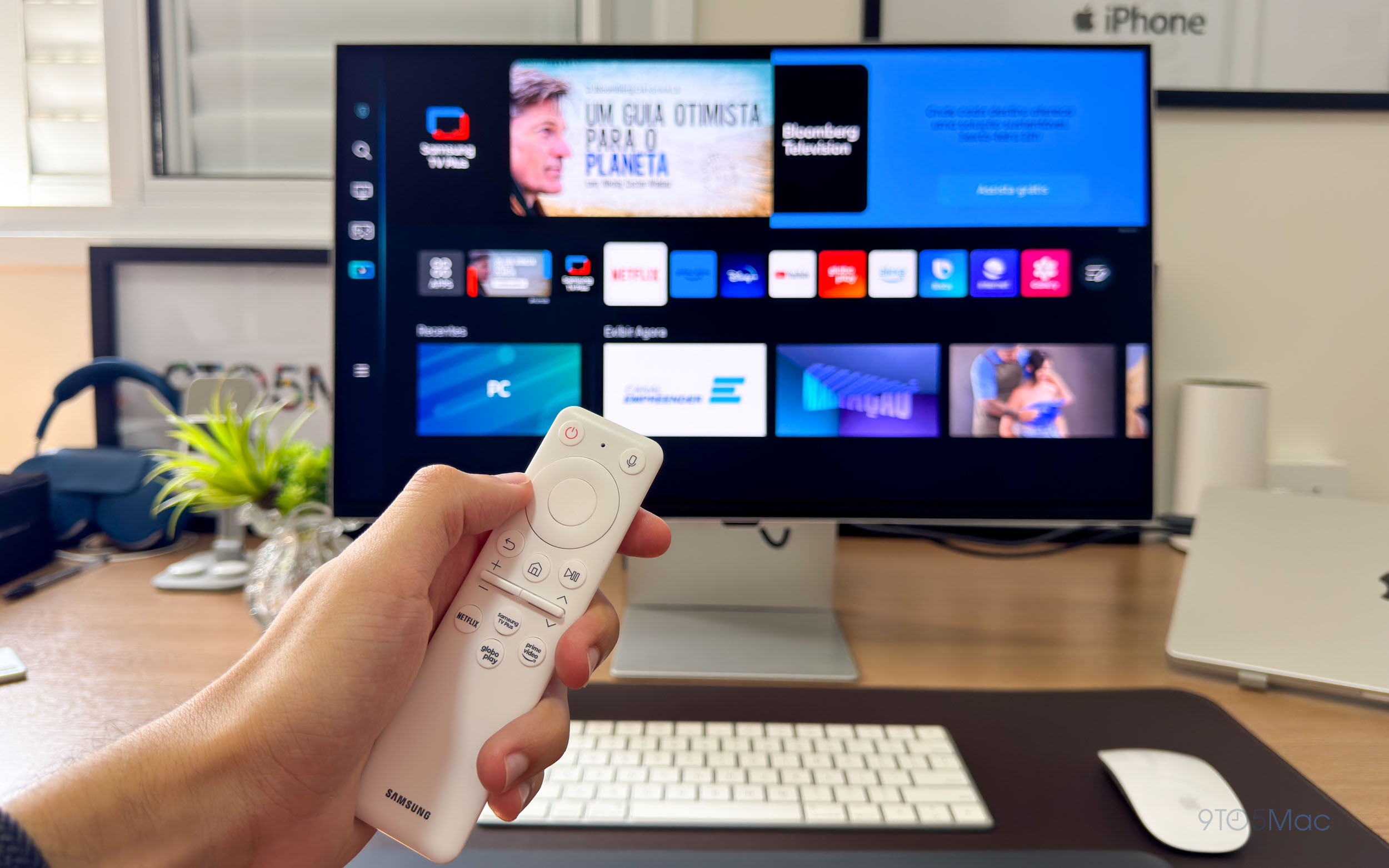
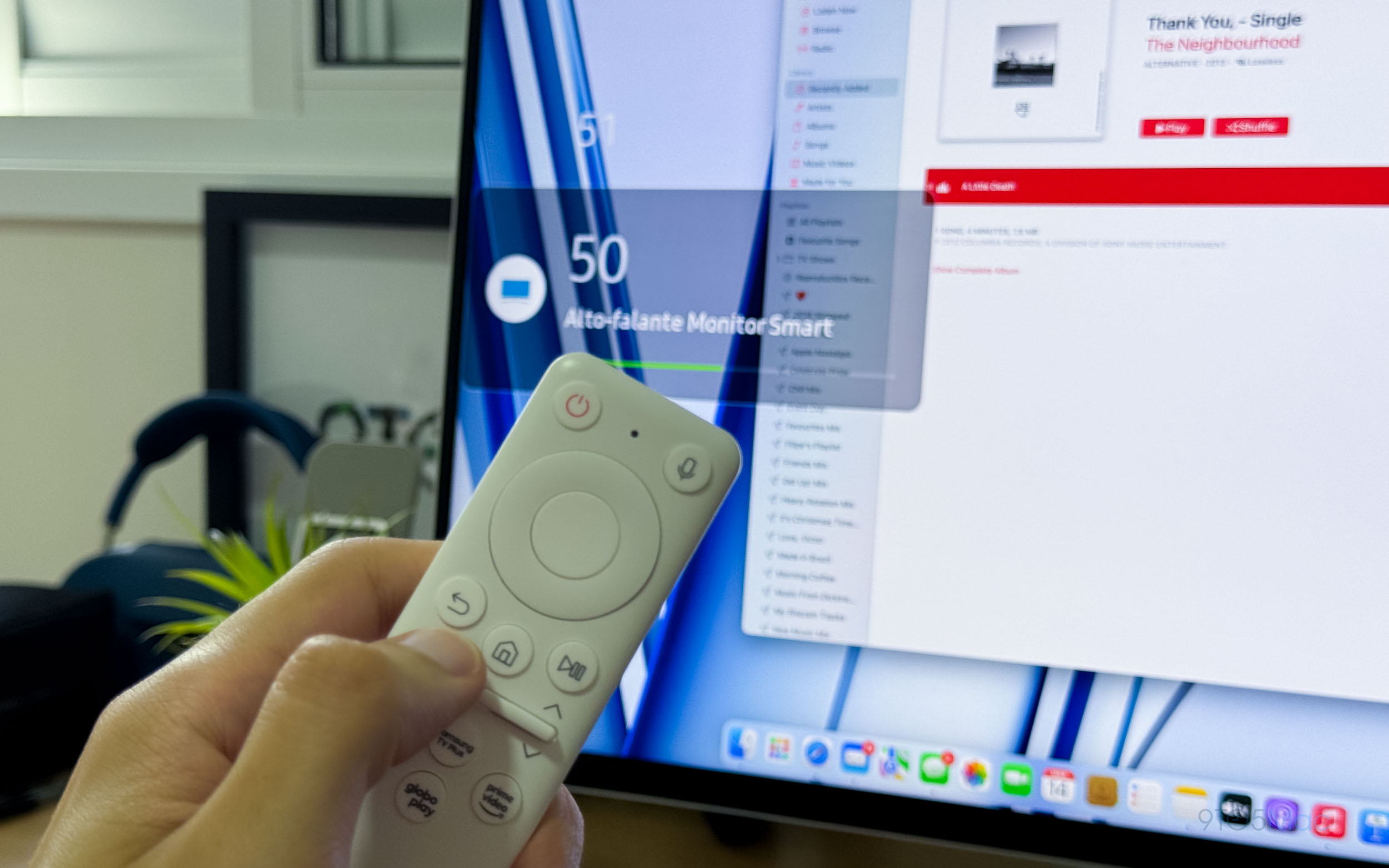
Because it runs a TV operating system, making adjustments to the ViewFinity S9 is also a pain. You need to use the remote control to get to the home screen and then open the settings. Even changing the volume requires you to press up or down buttons on the remote control.
The cool thing about being smart is that ViewFinity S9 works with things like AirPlay, so you can mirror your iPhone screen on it while using your Mac side by side. Studio Display can’t do that.
Wrap up
To sum things up, Studio Display and ViewFinity S9 are similar in a lot of ways, but there are clear differences between them. Studio Display is a typical Apple product with exceptional build quality and easy setup, but you’ll have to spend extra money if you need anything else that doesn’t come in the box – like an adjustable stand.
ViewFinity S9, on the other hand, isn’t as premium as Apple Studio Display, but it delivers the same image quality, which is probably the most important thing in a monitor. Plus, if you’re okay with giving up the premium construction, you end up getting more with the adjustable stand and matte screen for much less.
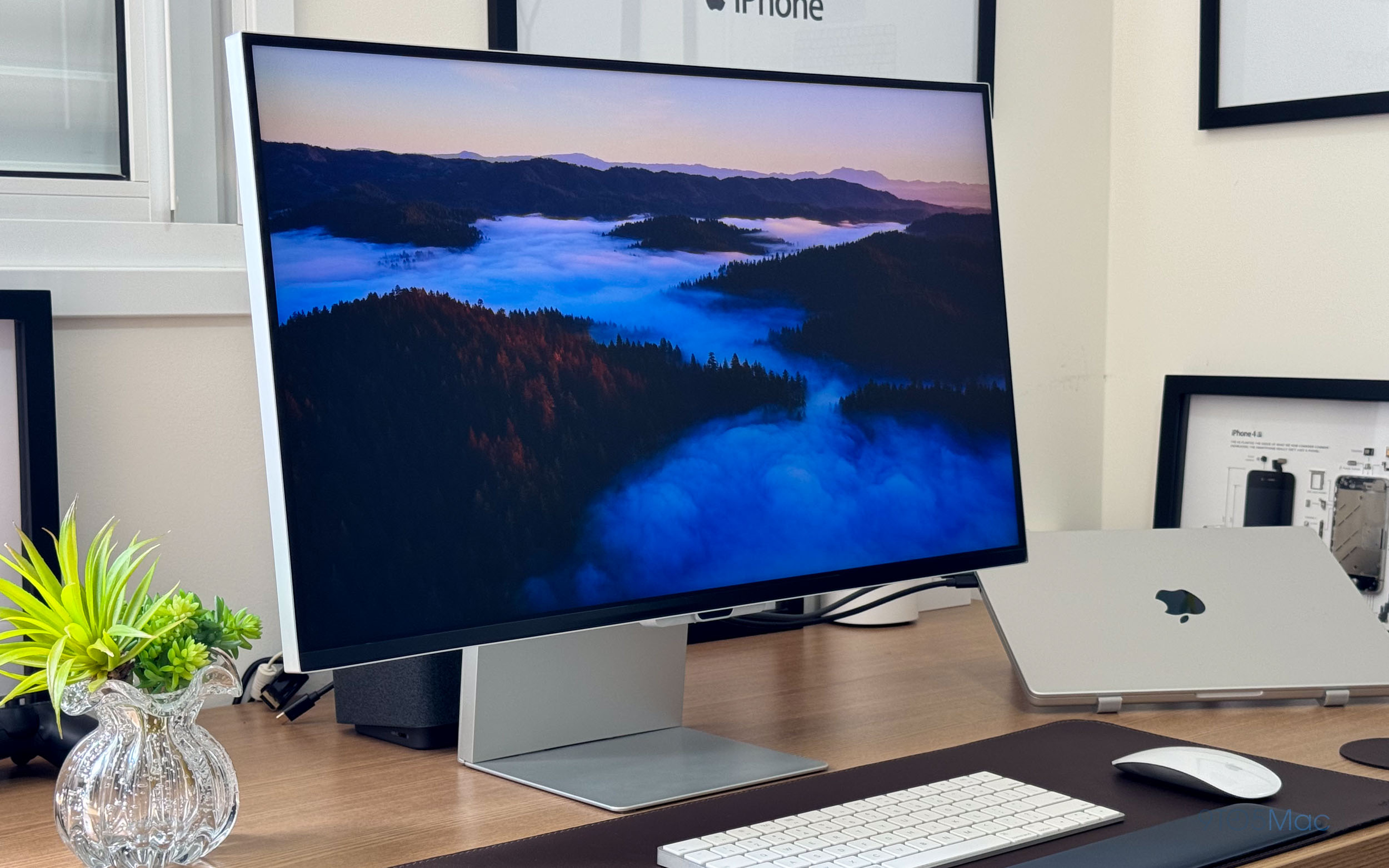
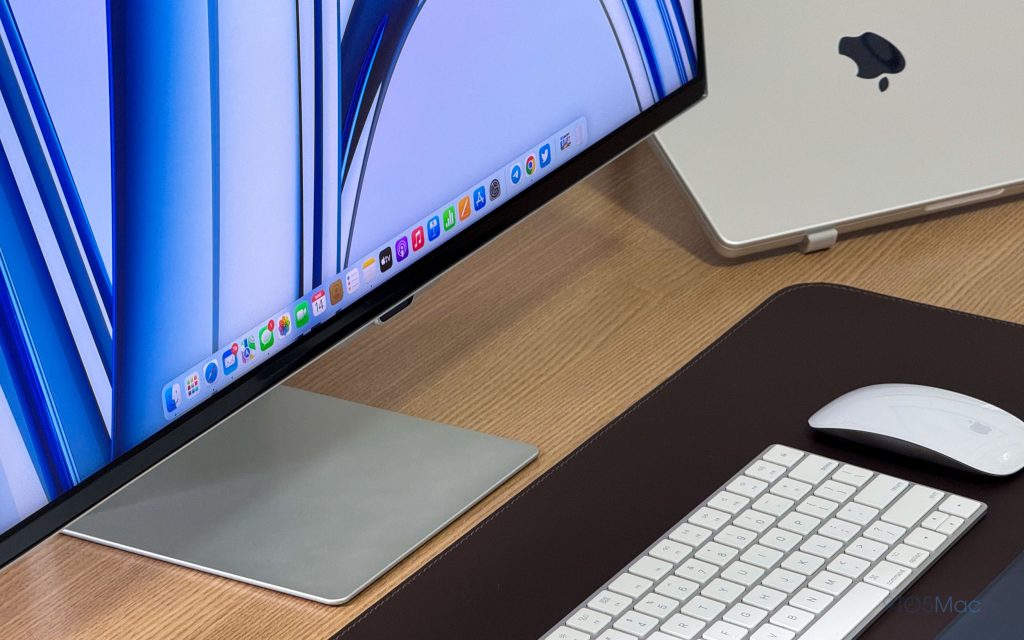
More than personal preference, the ViewFinity S9’s big selling point is price. You can already find it for prices under $1,000 in stores like Amazon, while it’s hard to find the Apple Studio Display at great discounts. If price isn’t an issue for you, go with Studio Display. But if you want an external monitor as good as Apple’s for less, the Samsung ViewFinity S9 is the one to go for.
FTC: We use income earning auto affiliate links. More.




![[CITYPNG.COM]White Google Play PlayStore Logo – 1500×1500](https://startupnews.fyi/wp-content/uploads/2025/08/CITYPNG.COMWhite-Google-Play-PlayStore-Logo-1500x1500-1-630x630.png)